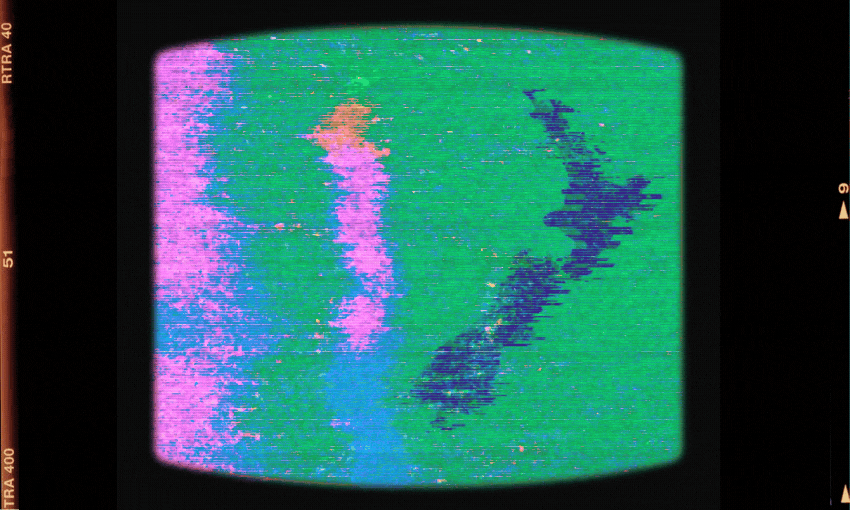Filmmaker Ahmed Osman reflects on the many challenges the screen industry is facing this year – and what needs to change.
I grew up in front of the TV. For me, it was more than just background noise: it was connection. Shows like bro’Town, Street Legal, and Outrageous Fortune weren’t just entertainment, they were a reflection of us. They created shared moments with whānau, and told the stories that brought us together.
That feeling of connection, paired with a lack of seeing people that looked like me on screen, sparked my passion for storytelling and shaped my career in film and television. Having worked across everything from running roles to accounts, I now have the privilege as a producer to tell stories that reflect the diverse Aotearoa I’ve always known.
For a long time, we’ve punched well above our weight, telling bold, distinctive stories that resonate deeply, both here and abroad. And while shows like After the Party prove that we still have the ability to create exceptional work that captures hearts and minds around the world, 2024 was one of the toughest years our local TV industry has ever seen.
The challenges are many, and they’re not just local. Globally, the industry has faced significant upheaval, from strikes to shifting audience habits and tightening budgets. But here in Aotearoa, those issues have been amplified. Competing against global streaming platforms like Netflix, Disney+, and Amazon is an uphill battle. These platforms dominate with big budgets, aggressive content strategies, and global reach. They’re happy to use our landscapes as a backdrop for their productions, but they don’t invest in our stories, our communities, or our culture.
This lack of investment exacerbates an already fragile system. Audiences, overwhelmed by the sheer volume of content available, often turn to big budget international shows over homegrown ones. For us as an industry, that means fewer chances to connect with local viewers and fewer opportunities to keep our stories alive.
At the same time, traditional linear television, a crucial platform for showcasing local content in the past, has declined sharply. Families aren’t gathering around the TV for the latest local drama in the way they used to. Streaming has taken over, but the system that supports local production hasn’t evolved quickly enough to meet this new reality.
New Zealand On Air (NZOA) remains the backbone of our local TV industry. Without them, so many of the shows we love wouldn’t exist. But NZOA can only do so much. With limited resources and a government mandate to deliver specific outcomes, they are stretched thin trying to support an industry in flux. Producers, myself included, often feel the pressure to tailor our projects to fit funding criteria, sometimes at the expense of chasing bold or unconventional ideas.
This isn’t a criticism of NZOA – they’ve kept the lights on for countless productions and supported the stories that have defined our cultural identity. But as our reliance on them grows, the gaps in the system are becoming more apparent.
Countries like France and Canada have taken bold steps to address the challenges faced by local industries, requiring global streamers to reinvest a portion of their revenue into domestic productions. Screen Producers Australia (SPA) has been advocating for similar streaming regulations. In France, for example, 20% of streaming revenue must be spent on French content. The New Zealand Screen Producers’ Guild (SPADA) has also called for a levy on streaming platforms’ local revenue, which would be reinvested into domestic production.
A similar model here could provide a much-needed lifeline, ensuring that streaming platforms contribute to the growth of our local industry, rather than just profiting from it.
But this isn’t just about money. It’s about how we value the creative process. Development is where the journey begins where ideas are born, shaped, and refined into the shows we fall in love with. Yet, too often, development is underfunded or overlooked. If we want to build a thriving industry, we must recognise this phase as essential, not optional.
2024 tested us in ways we couldn’t have anticipated. People lost jobs, productions have been delayed, and the future of our industry has felt uncertain. But as we look ahead in 2025, I believe there’s room for optimism. We’ve proven time and again that we’re resilient, creative, and capable of producing world class work. But to truly thrive, we need to rethink where we’re headed. Development needs more support with funding that gives our ideas the chance to grow into compelling stories that we are capable of telling. We need to consider practical solutions like streaming levies to ensure our stories have the resources to reach audiences in Aotearoa and abroad
I love this industry. I love what it means to us as a nation and what it’s given me personally. And while 2024 was a very hard year, I believe in our ability to adapt and to rise to the challenge, and keep telling the stories that matter most to us.


